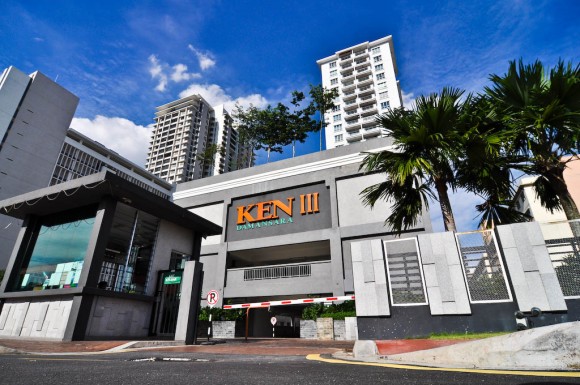ONE might think that as a Petaling Jaya City Council (MBPJ) councillor, getting answers from local authorities and government departments would be relatively easier. It is, in fact, one of the biggest challenges I face. Indeed, even when I receive “answers”, they are seldom satisfactory and instead pose more questions, which, then again, go unanswered.
Paramount View
Take the open letter I wrote to MBPJ mayor Datuk Mohd Roslan Sakiman in March 2011 on the Paramount View condominium development. This was a follow-up letter to one I wrote in November 2010 which went unanswered.
In my letters, I pointed out what seems to be serious discrepancies over MBPJ’s approval of the Paramount View development. I stated that MBPJ’s 2005 approval seemed to be granted based on land titles registered in 1993. However, a 2003 government gazette had revoked all land titles for the area for the purpose of building low-cost housing, calling into question the validity of the 2005 approval. There is also the existence of a new 2007 land title for the area that obviously postdates the 2005 approval.

The mayor’s office replied me in April 2011, but it didn’t answer my queries for clarification on these issues. It merely stated that the 2003 government gazette sets aside the land for low-cost housing under the Program Perumahan Rakyat (PPR). Then, it said the 2007 land title for a residential building does not conflict with MBPJ’s 2005 development approval. It did not explain how approval was granted when the land had been set aside for low-cost housing. Neither did it say how the land title for residential housing could be issued after approval was granted.
So five months after my first letter, I’m still stuck without an adequate answer on how MBPJ’s development approval for Paramount View is valid.
This experience, however, is not unfamiliar to me. I encountered similar responses when I queried the council’s billboard policy, and when I raised the issue of the senior government officers owning low-cost flats.
How to reply letters
The Panduan Pengurusan Pejabat book, a set of office guidelines for government departments, has details on how to treat letters received internally. The following excerpt is self-explanatory:
“Semua surat yang diterima hendaklah diambil tindakan segera. Sekiranya surat itu memerlukan jawapan segera, ia hendaklah dibalas dalam masa yang singkat.”
It goes on to state: “Sekiranya jawapan segera tidak dapat diberikan, penulis surat itu hendaklah dimaklumkan melalui surat akuan terima yang menyatakan bahawa jawapan yang lengkap akan disusuli dalam satu jangka masa yang dinyatakan.”
The book’s introduction states that the contents are to be adopted by all government departments and agencies from the time they were issued. From an organisational perspective, this is akin to a head office giving instruction to all branch offices to follow a set of instructions.
Of course, regardless of what the introduction on the book says, a policy is not valid until the local council formally adopts it at the council’s full board meeting. I am uncertain whether the council has adopted these operation guidelines, since the council management does not seem to view the slow and vague responses as a disciplinary problem.
Inconsistencies galore
So why did the officers not reply me with a proper answer complete with references of how they reached their conclusions? Perhaps it is because they cannot answer, as the next example illustrates.
While I was dealing with the collapsed river wall of Ken Damansara 3 earlier this year, I found that the development’s planning permission layout plan states that the building would be 22 storeys in height. Yet, somehow, what was on site was a 24-storey building. Under the Town and Country Planning Act, the planning permission is the first step in the development process, and subsequent documentation must comply with it.

In attempting to explain the discrepancy, a building department officer said there was nothing wrong with the additional floors because the plot ratio for the land was not exceeded. The officer also explained that one of the additional floors housed utilities and therefore did not count towards the floor limit. He added that another floor was half a floor in the basement and apparently also did not count.
When I enquired where such an interpretation could be found, the officer said the policy was from the town planning department, but added that this was only told to him verbally. I asked the officer for written confirmation of what he had told me. I have not heard anything yet.
Being answerable
As a councillor, I am not directly empowered to discipline officers, so perhaps the effects of not answering me promptly and adequately are possibly inconsequential. But councillor or not, I believe that the public should expect its council to be able to provide adequate explanations on matters within its purview.
Meanwhile, as councillor, I am answerable to the public that raised these issues for me to investigate. For now, I am yet unable to answer many questions until I receive proper replies from the council. ![]()
MBPJ councillor KW Mak took a walk in Kuala Lumpur on 9 July 2011. He is proud to have walked among fellow Malaysians and happy to have met so many wonderful people along the way.


Kong Kek Kuat says
@ KW Mak
Don´t you feel like quitting?
Why not let them rot? The country´s going places, obviously.
KW Mak says
@ Kong Kek Kuat,
I swore an oath to serve the public. I am still able to do so, so I guess that’s what I’ll do.
:p
Andrew I says
Wow, from a 22 to a 24-storey building. Talk about building real castles in the air.
JW Tan says
Technically, the guidelines were followed
Jawapan yang dibalas tidak semestinya jawapan yang berguna. Namun, makna perkataan ‘segera’ dan ‘lengkap’ akan ditentukan oleh pegawai yang menjawab.
KW Mak says
@ JW Tan
Nice try, but unless there’s actually a document that specifically gives an officer the power to interpret text any which way they choose, they have no such power.
I would therefore have to ask you to produce said document that allows an officer to interpret in the manner in which you prescribed – or would you take several months to get back to me with a proper written reply too (with no answer all the same)?
:p
K S Ong says
So long as the penalty for breaking the law is not punitive enough, owners or developers will continue to do so, or at least be tempted. This situation is similar to preservation of heritage buildings, where it pays to demolish first then ‘kautim’ later.
To the developer, the extra floor is worth millions compared to the maximum fine which can be imposed. Normally, once built, most people would find demolishing it a waste and be quite sympathetic to the guilty party. But we should bear in the mind the possible adverse effects an extra floor would have on the structure and foundation. I am surprised the decision-makers can sleep well knowing that the safety aspect has been compromised.
Please bear in mind that what is specified by the structural engineer depends on his inclination, whether he is one for playing it safe or one who helps the developer save. It also depends on the contractor, whether he is conscientious or one who tries to cut costs and corners whenever possible.
So we might have a situation where a safety-conscious engineer specified extra steel for a 22-storey building which could easily withstand a 24-storey, built by a good contractor who built it according to specs. What if the engineer helped in saving costs and the contractor tried to save costs to make extra profits?
As for the land meant for low-cost housing being used for more profitable development, again it happens so often in KL and I am sure everywhere else. Developers with good connections are able to get away from such breaches without being blacklisted. Then there are the requirements for x number of car parking spaces being waived with payments in lieu, which over time, causes the traffic congestion. Common sense will tell us that insufficient car parking spaces will lead to illegal or even double parking, or cars going round looking for a place to park. To make matters worse, five-foot ways and pavements are blocked by business activities, and even pedestrians use the roads!
bluksyes says
One interesting question is also the ethics of the said developer: if they had submitted a 22-storey building for approval, why did they build a 24-storey building instead? How come they get away with bad behaviour, and do they not have a conscience and a philosophy of conducting business honestly?
Its all too easy to put the blame on enforcement officers or policymakers, but what about the 28 mn of us who have a choice in our everyday decisions and behaviours? Do we choose to double-park, or pay RM 3 for parking? Do we choose to walk the extra 100m to the rubbish bin or just throw the rubbish on the sidewalk? Do we choose to do the right thing, or just the easiest/most profitable thing?
KW Mak says
@ bluksyes
I rather know what the council’s standards are before I get to the stage of blaming the developer for everything. If the council had their own reasons for approving this, the developer would just say the council allowed this and that would be the end of the story.